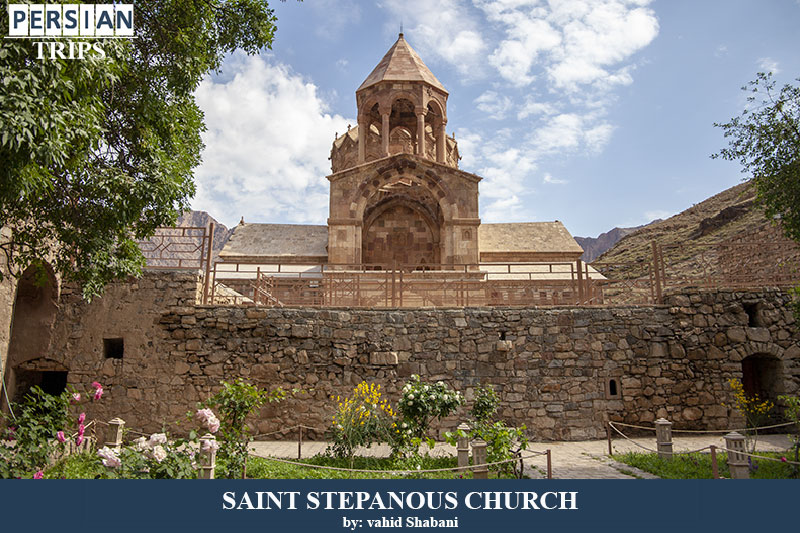Khajeh Nazar Caravanserai

Today, we want to travel to the northwest of Iran to introduce you to one of the border attractions of this country. A building that is a strange combination of religion, trade, nationalism and architecture.

Since the twentieth century, the local dress of Azerbaijan has lost its popularity in the cities and has taken on a state of modernity, but generally in nomadic and rural areas along with the areas inhabited by Azerbaijanis, it has retained its former function.
Azerbaijan region is one of the most strategic and important regions of the country due to its special geographical location. East Azerbaijan province is one of the most important and most populated provinces of Iran, which is located in the northwest corner of the country. The area of this province is 45491 square kilometers, which covers about 2.8% of the total area of the country. In terms of natural location, this province is located at the confluence of Alborz and Zagros mountains; in other words, in the Alborz and Azerbaijan zones in the northwest corner of the plateau of Iran. In general, East Azerbaijan is a mountainous region with about 40% of its surface covered by mountains. Among the famous mountainous areas of the region, we can name Sabalan volcanic mountain in the east, Sahand in the west and southwest, Qarehdagh mountain range in the north, Takht-e Soleyman and Arbat mountain ranges in the south, Bozghoosh heights in the southeast and Qushadagh in the northeast of the province.
In the handicrafts section, we can mention the exquisite and unique handmade carpets and tableau rugs of Tabriz craftsmen. Azerbaijan, and especially the city of Tabriz, has long played a major role in creating exquisite carpets; the artistic history of these people dates back to the Median era. Carpet design in this region has a long history and there have been great designers in this region who have provided valuable services to Iranian carpet industry by creating precious and valuable works.
Arg-e Alishah, Tomb of Sheikh Shahab Al-din Ahari, Maragheh Gonbad-e Sorkh, Babak Castle, Arasbaran Forests, Tabriz Historical Bazaar Complex, Marand Grand Mosque, The Monastery of St. Stepanos, Asiab Kharabe Waterfall, Awhadi Maraghai Tomb, Tomb of Sheikh Mahmoud Shabestari, Ainanloo Protected Area, Sharafkhaneh Port (Lake Urmia), Maragheh Mehr Temple, Esco Gardens, Kandovan Village, Azerbaijan Museum, Sahand Ski slope, Ghori Gol Wetland, Bostan Abad Spa, Zahak Castle, Agh Bolaq Cave, Blue Mosque, Yaniq Goli and Zolbin Goli Wetlands, Qara Baba Bostanabad Hill, Tork Miyaneh Stone Mosque, Jamalabad Miyaneh Caravanserai, Ghaffariyeh Dome, Modavvar Dome, Dokhtar Miyaneh Bridge, Sarab Grand Mosque, Nomadic Museum, Bozqush Peak, Municipality Palace Museum, Razliq inscription are some of the attractions of this province.
The people of this region have simple and intimate rituals and customs, like the Takam Gardani or Boz Cherani (goat-farming). It is an official ceremony to announce the arrival of spring with a puppet-maker in a local costume who shows a cotton doll goat and informs people about the arrival of spring. Spring cleaning, Bayram Paei, Qabakhlama, Khancheh, Chaharshanbeh Soori, etc. are other customs of the Azerbaijani people. Women's clothing has all the features of a full cover. The younger ones wear bright and cheerful colors, with beautiful embroideries and patterns made of cashmere and silk; they also wear a hat called "Borook". Older women often wear headbands called "yailiq". Sar poosh (a kind of Cap), Charghad (floral scarves), headbands, and slit shirts are among the local women's clothing in East Azerbaijan.
Tags: East Azarbaijan Province, Kandovan Village, Arg-e Alishah, East Azarbaijan Attractions

Today, we want to travel to the northwest of Iran to introduce you to one of the border attractions of this country. A building that is a strange combination of religion, trade, nationalism and architecture.

Julfa Choopan Church, also known as St. Andrew Verti, was built in the 16th century and rebuilt in 1836. The natives of this area also know this building as Nakhirchi Church, which means cowboy church.

What we are going to introduce here is one of the symbols of Tabriz city (East Azarbaijan province) and even the entire northwest of Iran.

Tabriz Mashrouteh(constitutions) houseis one of the most famous historical house of Iran that was built in Qajar architecture style by an architect from Tabriz called Haj Vali.

Tabriz is a very special city since many of the first manifestations of modern European civilization have appeared in this city due to its proximity to Europe and being the traditional residence of Qajar crown princes.

Tabriz is one of the old and historical cities of Iran. However, due to earthquakes and fires caused by the attacks of Iran's enemies, the number of surviving heritages is less than similar cities.

7.62°C
Tehran